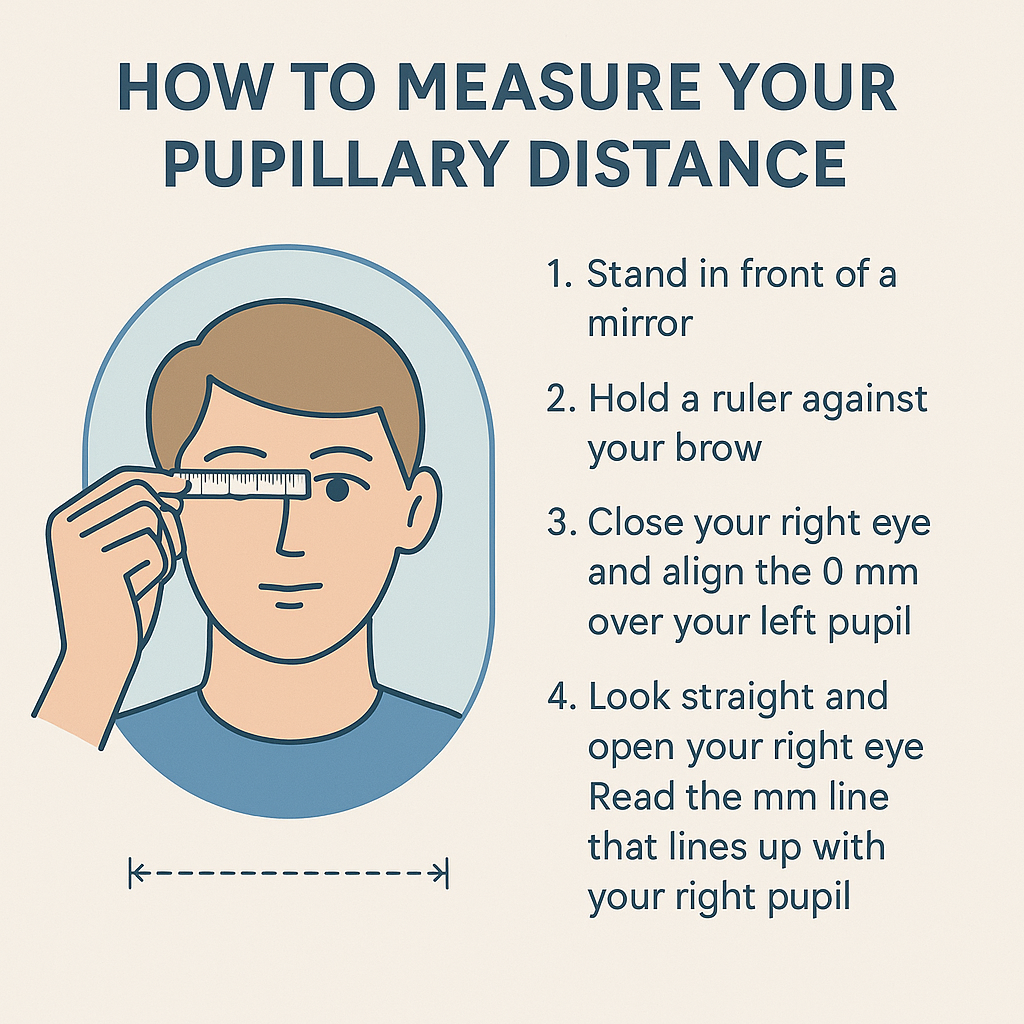👀 What is Pupillary Distance (PD) and Why Does It Matter?
If you're ordering prescription glasses online, chances are you'll come across a term called PD, or Pupillary Distance. While it might seem like a small detail, it plays a huge role in making sure your glasses actually help—not hurt—your vision.
Let’s break down what it means and why it matters when buying glasses.
📏 What is Pupillary Distance (PD)?
Pupillary Distance (PD) is the measurement (in millimeters) between the centers of your pupils.
It tells the lab exactly where to place your prescription in the lenses so that your eyes line up correctly with the optical center.
There are two types:
-
Single PD – One number, often used for single-vision glasses.
-
Dual PD – Two numbers (for each eye), often used for progressive or bifocal lenses.
Example: 63mm (single PD) or 31.5mm / 31.5mm (dual PD)
🧠 Why Does PD Matter?
If the PD is off—even by just a few millimeters—it can cause:
-
Blurry or distorted vision
-
Eye strain or headaches
-
Discomfort wearing your glasses
-
Misaligned lenses in progressives or bifocals
Basically, it ensures your prescription is centered where your eyes naturally look.
📋 How Do You Find Your PD?
You can get your PD from:
-
Your eye doctor (sometimes not printed on your Rx—ask for it!)
-
Previous glasses (if you’ve ordered online before)
-
Measuring it yourself using a mirror and a millimeter ruler
-
Online PD measuring tools or apps (some stores offer virtual measurement)
💡 Tip: If you're making multifocal lenses like progressives, always go with a professionally measured PD for accuracy.
🎯 PD in Kids and Teens
For children, PD is extra important because:
-
Their eyes are still developing
-
A wrong measurement can cause vision issues or delay correction
-
Kids move around a lot—alignment is key!
Always ensure your child’s PD is measured by a professional if you're ordering online.
🧑🏫 Final Takeaway
PD isn’t just a “nice-to-have”—it’s a must for comfortable, accurate vision correction. Think of it like the alignment on your car: everything could be technically “working,” but if it’s off-center, you’ll definitely feel it.
So before you check out with your new frames, make sure you’ve got your PD on point.


